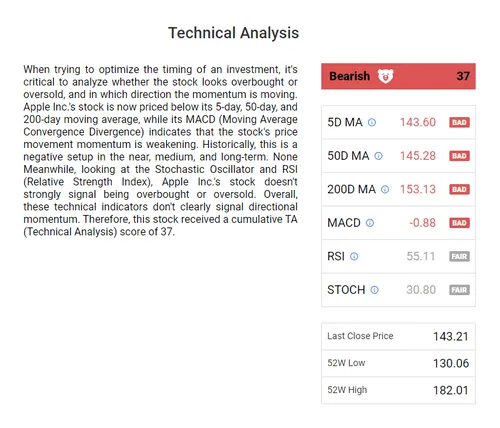20 Free Tips For Choosing Ai Investment Platform Sites
20 Free Tips For Choosing Ai Investment Platform Sites
Blog Article
Top 10 Tips On Assessing The Market Coverage For Ai Software For Predicting And Analysing Stocks
Market coverage is among the most important aspects to be considered when evaluating AI-powered trading platforms. This determines how many assets and markets are accessible. With a platform that provides extensive coverage, you are able to diversify your portfolio and avail of global opportunities. Additionally, you can adjust to various trading strategies. Here are 10 strategies to help you assess the market coverage offered by these platforms.
1. Evaluate Supported Asset Classes
Stocks: Ensure that your platform is compatible with major stock exchanges like NYSE, NASDAQ LSE and HKEX, and that it includes mid, small and large-cap stocks.
ETFs - Check to see if your platform supports an extensive selection of ETFs which offer exposure to a variety of various sectors, regions, or themes.
Options and futures. Check if the platform includes derivatives like options, futures and other instruments leveraged.
The commodities and forex. See whether there are any forex pairs available, along with precious metals, commodities for energy and agricultural commodities.
Check if the platform works with major cryptocurrencies such as Bitcoin and Ethereum, and alternative coins.
2. Check coverage in the geographic area.
Global markets: The platform should include major global markets like North America and Europe, Asia-Pacific and emerging markets.
Regional focus: Check whether the platform is focused on particular regions or market segments which match your trading preferences.
Local exchanges - Examine to see if there are local or regional exchanges available that relate to your location and your strategy.
3. Consider comparing real-time data with delayed data Delayed Data
Real-time data: Ensure that the platform has real-time data to trade, and for making timely decisions.
Delayed information: Determine whether delayed information is available at no cost or a discounted price that could be sufficient for investors who have a long-term perspective.
Data latency: Determine whether the platform reduces the latency of real-time data feeds especially for high-frequency trading.
4. Assess Historical Data Availability
The depth of historical data: Verify that the platform provides extensive data (e.g. over 10 years old) to backtest.
The granularity of the data: Determine if the historical data include daily, intraday, weekly, and monthly level of granularity.
Corporate actions: Confirm that historical data takes into account splits in stock (if appropriate), dividends, and any other corporate action.
5. Examine the Order Book and Market Depth Information
Data Level 2: Make sure that the platform provides Level 2 (order book depth), for better price discovery.
Bid-ask Spreads: Make sure that the platform shows live spreads between bid and request for the most precise pricing.
Volume data: Make sure the platform has detailed data regarding volume that can be used to analyse liquidity and market activities.
6. Assess the Coverage of Indices Sectors
Major indices: Check that the platform includes major indices for benchmarking, index-based strategies, and other uses (e.g. S&P 500, NASDAQ 100, FTSE 100).
Data from specific sectors: To perform a focused analysis, verify whether the platform contains data for certain industries (e.g. technology, health care, technology, etc.).
Customized indexes. Determine if your platform permits you to create and track custom indexes based on the criteria you define.
7. Assess the impact of integration with News and Sentiment
News feeds: Ensure that the platform incorporates live feeds of news from credible sources, like Bloomberg and Reuters in the case of market-moving events.
Use the platform's sentiment analysis tool based on information from social media, news or other sources.
Event-driven strategies (e.g. earnings announcements or economic reports) Make sure that your platform supports trading strategies that rely on events.
8. Verify Multi-Market Trading Capability
Trading in cross-markets: The platform will allow trading on different markets or asset classes using a single user interface.
Currency conversion: Make sure that the platform can handle multi-currency accounts, as well as automatic currency conversions for international trading.
Support for various time zones Check that your platform is able to trade on global markets in different time zones.
9. Examine the coverage of alternative data Sources
Alternate data sources: To get unique insights, check if the platform uses other sources of data.
ESG Data Find out if there are any environmental, social, or governance (ESG data) on the platform for investing socially responsible.
Macroeconomic data - Ensure that the platform has macroeconomic information (e.g. GDP, inflation) to conduct fundamental analysis.
Review Market Reputation and User Reviews
User reviews: Review the feedback of users to determine the platform's market coverage Usability, reliability, and coverage.
Verify the credibility of the platform in relation to its coverage and awards.
Case studies: Search for case studies, testimonials, and other details that highlight the platform's effectiveness on specific market segments or asset types.
Bonus Tips
Trial period - You can use the demo or trial version for free to test the coverage of data and market coverage.
API access: Check if your platform's API can access market data programmatically to conduct custom analysis.
Customer support: Ensure the platform is able to assist you with any market-related queries or data issues.
These tips will aid you in assessing the market coverage of AI stock-predicting/analyzing trading platforms. You'll be able to choose one that gives you access to markets and data for profitable trading. Comprehensive market coverage lets you to diversify your portfolio and discover the possibilities of your portfolio. It also assists you adapt to changes in market conditions. Read the best click here on trade ai for more info including ai investing, trading chart ai, free ai trading bot, stock analysis app, ai stocks to invest in, ai investing, copyright advisor, canadian ai stocks, best ai etf, ai stock trading and more.
Top 10 Tips For Evaluating The Social And Community Features Of Ai Stock Trading Platforms
Understanding how users share information, interact and learn is essential in understanding the AI-driven trading and stock prediction platforms. These features can enhance the user experience through providing helpful assistance. These are 10 top ways to evaluate the social and community elements of these platforms:
1. Active User Group
Tips - Make sure the platform is backed by a base of users engaged in ongoing discussions, sharing insights and giving feedback.
Why is that a community that is active creates an environment that allows users to grow and learn with one another.
2. Discussion Forums, Boards, and Discussion Forums
TIP: Check the quality and extent of participation on message boards and forums.
Why? Forums let users post questions, debate strategies and market trends.
3. Social Media Integration
TIP: Find out if the platform is linked to social media platforms for sharing news and insights (e.g. Twitter, LinkedIn).
Social media integration is a great way to increase engagement and provide real time market updates.
4. User-Generated content
Tips: Search for options that let users create and share content, for example, articles, blogs or trading strategies.
Why: User-generated content fosters a collaborative environment and provides diverse perspectives.
5. Expert Contributions
Check to see if experts from the industry such as market analysts, or AI experts, have contributed.
The reason: Expert opinions add credibility and depth to the community discussion.
6. Chat and real-time messaging
Tip: Check whether users are able to communicate with each other instantly by using real-time messaging or chat.
Reason: Real-time interaction facilitates rapid information sharing and collaboration.
7. Community Moderation and Support
Tip: Assess the level of moderation and customer support in the community.
How do you know? A well-balanced moderation strategy can help create a peaceful and positive atmosphere. Help is readily available to resolve issues quickly.
8. Events and Webinars
Tip: See whether your platform offers Q&A sessions, live sessions or webinars.
What are the benefits: These events provide opportunities for learning and direct interaction with industry professionals.
9. User Review and Feedback
Consider options that offer users the ability to provide reviews and feedback on the platform as well as its community features.
What is the purpose: Feedback from users helps determine strengths and areas of improvement in the community ecosystem.
10. Gamification of Rewards
TIP: Check whether the platform offers games, like badges or leaderboards.
Gamification is a great way to motivate users' involvement with the community.
Bonus Tip: Privacy and Security
You must ensure that privacy and security features for social and community functions are strong enough to guard information and user interactions.
These aspects will help you decide if a trading platform or AI stock prediction can provide an amiable and helpful community to enhance your trading skills and knowledge. Have a look at the top rated best stock analysis website url for site recommendations including ai invest, chatgpt copyright, ai for investing, stock analysis tool, ai stock picker, investment ai, stock ai, best ai trading software, free ai trading bot, trader ai intal and more.